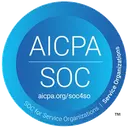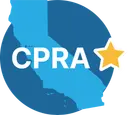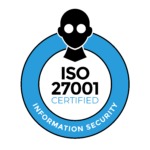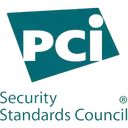SOC 1 compliance is critical for service organizations that impact their customers’ financial reporting. When your services affect how client companies record, process, or report financial data, their auditors will likely require a SOC 1 report before signing off on financial statements. Understanding the true cost of SOC 1 attestation helps you budget appropriately and avoid expensive surprises that can derail your compliance timeline.
Many organizations underestimate SOC 1 costs by focusing solely on auditor fees while overlooking internal resource requirements, remediation expenses, and ongoing maintenance. This comprehensive guide breaks down all SOC 1 audit costs to help you develop realistic budgets and timelines.
In this article, we’ll explore the complete cost structure of SOC 1 audits, including typical price ranges for companies of different sizes and complexity levels. We’ll examine the key factors that drive costs up or down, outline realistic budget scenarios, and share proven strategies to maximize your compliance investment. Whether you’re pursuing SOC 1 for the first time or looking to optimize your current compliance program, this guide provides the financial clarity you need to make informed decisions.
For finance and compliance leaders under pressure to deliver SOC 1 compliance on tight budgets, understanding these cost factors isn’t just helpful—it’s essential for successfully navigating the audit process without unnecessary expenses or delays. Let’s dive into what you can expect to pay for your SOC 1 audit and how to manage those costs effectively.
Cost components
A SOC 1 audit requires several different investments beyond just the auditor’s fee. Understanding these components helps organizations budget appropriately and avoid surprises.
Readiness assessments represent a critical first step in the SOC 1 journey. These evaluations, typically costing between $5,000 and $25,000, help identify control gaps before the formal audit begins. Many organizations find this investment saves significant time and money by preventing remediation work during the actual audit period.
Remediation costs can become the largest variable expense in your SOC 1 budget. This includes engineering time, administrative changes, and system modifications needed to address gaps identified during readiness. Depending on your organization’s maturity, remediation budgets typically range from low five figures ($5,000–$30,000) to six-figure projects for complex environments.
Auditor fees constitute the core cost of your SOC 1 engagement. These vary significantly based on audit type and scope. Type I audits (point-in-time assessments) typically cost $10,000–$60,000, while Type II audits (covering operational effectiveness over 6–12 months) range from $20,000–$120,000 for most organizations. Complex enterprise engagements can exceed $100,000+.
Compliance automation platforms have become increasingly common investments. These subscription-based tools (like Vanta, Drata, or Secureframe) streamline evidence collection and control monitoring, typically costing $5,000–$25,000 annually depending on company size and required features.
Internal staff time represents a significant hidden cost often underestimated in budgeting. Your team will dedicate substantial hours to project management, evidence collection, and control implementation. Security, IT, finance, and legal teams can expect to allocate 10–30% of their time during critical audit phases.
Factors influencing cost
Several key factors drive the wide range of SOC 1 audit costs, helping explain why similar-sized companies might receive dramatically different quotes.
Audit type selection significantly impacts your budget. Type II audits cost more than Type I because they require testing over a 6–12 month period rather than at a single point in time. The longer testing window means more auditor hours and evidence collection requirements.
Scope breadth directly correlates to audit cost. Every additional control objective, system, or business process included increases testing complexity. Organizations can manage costs by carefully defining scope boundaries to include only what customer auditors truly need.
Organizational complexity creates exponential cost increases. Multi-cloud environments, multiple data centers, and custom on-premises systems all increase evidence collection burden and testing time. Similarly, each additional physical location or international subsidiary drives costs higher through travel requirements and multi-jurisdictional evidence needs.
Your current control environment maturity dramatically affects both auditor and remediation costs. Organizations with well-documented processes, formalized controls, and automated evidence collection will spend significantly less than those building controls from scratch.
Auditor selection represents a strategic business decision with direct cost implications. Big Four and national firms command premium rates compared to boutique or regional specialists. However, some customers and stakeholders specifically request certain audit firms, making the higher cost a necessary business investment.
Time pressure creates cost premiums. Compressed schedules increase consultant and auditor labor rates. Organizations planning their first SOC 1 should allocate sufficient lead time—typically 3-8 weeks for readiness, followed by the audit period itself.
Subservice organization treatment affects testing requirements. The “inclusive” versus “carve-out” model decision determines whether your auditors must test subservice provider controls directly. Using existing subservice SOC reports (when available) can significantly reduce on-site testing needs and associated costs.
Example scenarios
Startup payroll SaaS companies typically face SOC 1 costs between $40,000 and $95,000 in year one. For a cloud-based payroll provider with 20-50 employees on a single AWS environment, the budget typically includes $8,000-$20,000 for readiness assessment, $10,000-$25,000 for an initial Type I audit, and $20,000-$50,000 for the six-month Type II audit. The timeline involves 3-8 weeks of readiness work, followed by a 6-month control operating period, and 2-6 weeks of final fieldwork and reporting.
Mid-market third-party administrators often invest $100,000-$250,000 for their initial SOC 1 program. Consider a 300-employee TPA handling billing and reconciliation systems across multiple locations. Their first-year costs typically include $15,000-$40,000 for readiness assessment, $20,000-$100,000 for technical remediation work, and $50,000-$120,000 for the Type II audit itself. The timeline stretches from 1-2 months of readiness preparation through a 6-12 month operating period, with 4-8 weeks of final reporting work.
Enterprise-scale financial service organizations should budget in the mid-six figures for comprehensive SOC 1 coverage. A multinational payroll processor or investment manager with over 1,000 employees across multiple subsidiaries and data centers can expect significantly higher costs. Program coordination and readiness typically runs $40,000-$150,000, remediation work often exceeds six figures, and auditor fees for Type II engagements commonly range from $150,000-$400,000 depending on complexity and scope. These organizations should plan for 9-18+ month timelines to complete their full SOC 1 program.
Regional factors and auditor selection significantly impact overall costs. Organizations using Big Four firms will pay premium rates compared to boutique specialists, though this may be necessary when serving enterprise clients who expect recognized auditor names. Companies with complex international operations face additional costs for travel, multi-jurisdictional testing, and coordinating subservice organizations. The strategic scoping decisions made early in the process often have the greatest impact on final costs.
Cost-saving tips
Start by automating evidence collection and monitoring. Using a compliance automation platform significantly reduces the manual effort required for gathering evidence and monitoring controls. These tools integrate with your systems and provide continuous visibility, which not only makes the audit process more efficient but also allows your team to focus on strategic tasks rather than administrative work.
Scope carefully and strategically. Begin with a narrow, well-defined scope that addresses your most critical business processes and customer requirements. Limiting your initial scope to essential systems and control objectives will reduce complexity and cost. You can always expand your scope in subsequent audit cycles as your compliance program matures.
Invest in thorough preparation. A readiness assessment before your formal audit identifies gaps early when they’re less expensive to fix. While this requires upfront investment, it prevents costly surprises during the actual audit and reduces the time your auditor spends helping you address issues.
Leverage your subservice providers’ reports. If you rely on third-party vendors for critical services, obtain their SOC reports rather than duplicating testing. This approach can significantly reduce audit time and expense, especially for organizations with complex supply chains or multiple technology dependencies.
Negotiate fixed-fee engagements. When selecting an audit firm, prioritize those offering transparent, fixed-fee pricing models. This approach prevents scope creep and provides budget certainty. Boutique audit firms often provide this pricing model and may offer better value than larger firms for many organizations.
Develop internal expertise. Building in-house compliance knowledge reduces dependency on external consultants. Invest in training for key team members who can manage compliance activities year-round, particularly in IT, security, and finance departments.
Create reusable documentation and processes. Design your control documentation, policies, and evidence collection processes for repeatability. This systematic approach reduces effort in subsequent audit cycles and creates institutional knowledge that persists even through staff changes.
Conclusion
A SOC 1 audit represents a significant investment, but its value extends far beyond compliance. The process strengthens your financial controls, enhances customer trust, and improves operational efficiency. By understanding the cost components and implementing the strategies outlined in this guide, you can achieve compliance more efficiently and derive maximum business value from your investment.
Planning is essential to managing SOC 1 costs effectively. Begin preparations well in advance, carefully select the right partners, and build a sustainable compliance program that evolves with your business. The most successful organizations view compliance not as a one-time expense but as an ongoing program that supports business growth and customer relationships.
Thoropass helps organizations streamline their SOC 1 journey through our purpose-built compliance automation platform and expert guidance. Our approach reduces audit preparation time by up to 50%, lowers overall compliance costs, and ensures you’re always audit-ready. We partner with trusted CPA firms to provide high-quality audits at predictable prices, giving you the confidence and documentation you need without breaking your budget.

Related Posts
Stay connected
Subscribe to receive new blog articles and updates from Thoropass in your inbox.
Want to join our team?
Help Thoropass ensure that compliance never gets in the way of innovation.












.png)